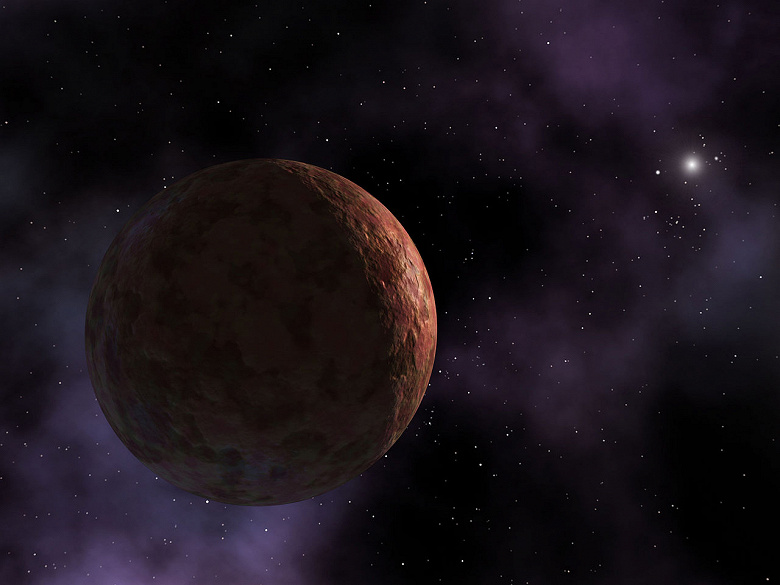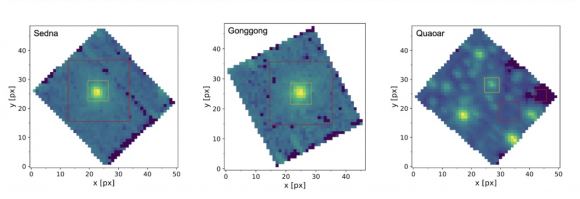“If ethane or other substances were on the surface for a long time, they would turn into even more complex molecules as a result of irradiation.”
The Kuiper Belt is a region at the edge of our solar system that is inhabited by icy objects. Since the late 20th century, scientists have sought to gain a better understanding of these trans-Neptunian objects to learn more about their orbits and composition. These bodies have a diameter of about 1000 km, which corresponds to the definition of Dwarf Planets by the International Astronomical Union.
Despite all the breakthroughs in astronomy, knowledge about trans-Neptunian objects is still limited. Until now, the only mission to study the outer regions of the solar system – Uranus, Neptune, and their main moons – was carried out only by the Voyager 2 probe, which flew past these giants in 1986 and 1989. New Horizons became the first probe to explore Pluto and its moons in July 2015, and the only one to encounter an object in the Kuiper belt on January 1, 2019, when it flew past the object Arrokoth.

These objects are of particular interest to astronomers because of their size, orbit, and composition. Trans-Neptunian objects such as Pluto, Eris, and Makemake retain volatile compounds (nitrogen and methane) on their surfaces. The only exception is Haumea, which lost its volatile compounds due to a collision with a large object (apparently).
Their study became one of the tasks of the James Webb Telescope (JWST). Using data from the Near Infrared Spectrometer (NIRSpec), an international team of astronomers observed three Kuiper Belt dwarf planets: Sedna, Gonggong, and Quaoar. The observations revealed several interesting orbital and compositional features, including light hydrocarbons and complex organic molecules, which are believed to be formed due to methane irradiation.
James Webb discovered ethane on three dwarf planets in the Kuiper Belt
The study was conducted by Joshua Emery, an assistant professor at the Astronomical and Planetary Institute at Northern Arizona University, and his research team included more than ten scientists from different universities and several countries. They wanted to know if there were volatile compounds on the surface of Sedna, Gungun, and Quaoar.
Although all the objects are approximately the same size, their orbits are different. Because of this, they have different temperature and radiation conditions – for example, Sedna spends most of its time behind the Sun’s heliosphere
The team observed three objects in the near-infrared range from 0.7 microns to 5.2 microns. Additional observations were made for Quaoara at wavelengths from 0.97 µm to 3.16 µm. The resulting spectra revealed some interesting features of these Trans-Neptunian objects and their surface composition.

Scientists found an abundance of ethane at all three sites, most notably at Sedna. Sedna also contains acetylene and ethylene. Their numbers correlate with orbits: largest on Sedna, smaller on Gungun, and smallest on Quaoara, corresponding to relative temperatures and irradiation conditions. These compounds are a direct result of methane irradiation. If ethane or other compounds were on the surface for a long time, they would be converted into more complex molecules due to irradiation.
The results are consistent with the findings of two recent studies: in both, astronomers measured the ratio of deuterium to hydrogen in methane on Eris and Makemake and concluded that methane is not primordial. They suggest that this is the result of methane being “processed” in the interior of objects and reaching the surface.
“We speculate that the same process may be occurring on Sedna, Gungun, and Quaoara. We also see that the spectra of Sedna, Gungun, and Quaoara differ from the spectra of smaller trans-Neptunian objects. Two recent conferences featured papers showing JWST data on the spectra of smaller trans-Neptunian objects that cluster into three groups, none of which are similar to Sedna, Gungun, and Quaoar. This result is consistent with the different geothermal histories of the three larger sites,” Emery said.
The results of the study may have implications for the study of trans-Neptunian and other objects in the outer solar system. This opens new insights into the formation of objects behind the snow line in planetary systems—the line beyond which volatile compounds freeze. In our Solar System, this corresponds to the nitrogen line, where objects hold large amounts of volatile compounds (such as nitrogen, methane, and ammonia) with very low freezing points.
According to Emery, their results also help to better understand what evolutionary processes occur with objects in this region: “The main significance is in determining the size at which Kuiper Belt objects are warm enough for reactions of primordial ice compounds and perhaps even for their differentiation. We will also be able to use the resulting spectra to better understand the irradiation of surface ice in the outer solar system. Future research will be able to study in more detail the stability of volatile compounds, the possibility of forming atmospheres on these objects, and how this depends on orbits.”
The JWST data is fantastic. They allowed us to detect these compounds, which is impossible from Earth. Often, when a new wavelength range is studied, the initial data may be of poor quality. JWST has provided extremely high-quality data on objects in the outer solar system




